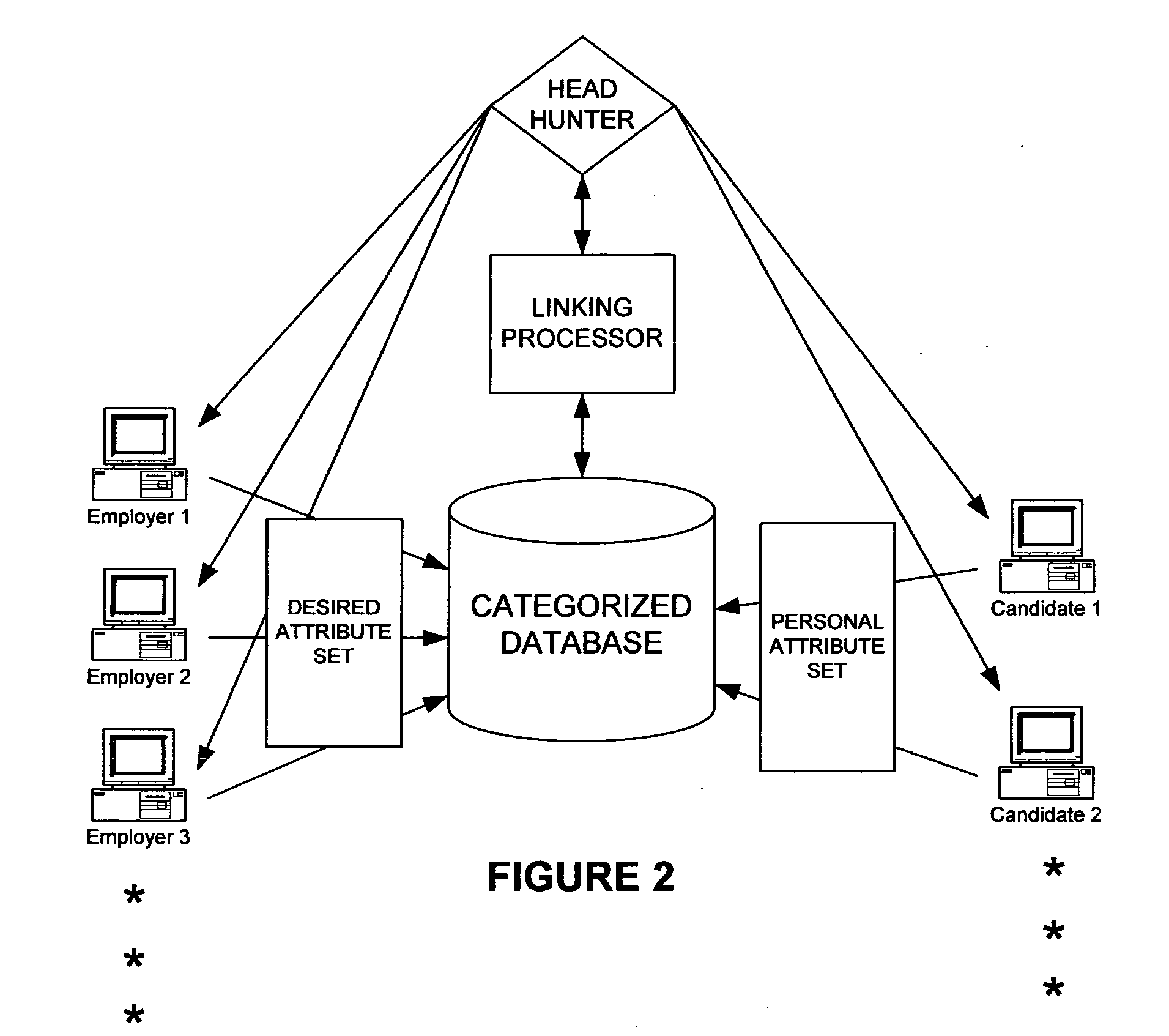Considerable cost is expended each year by employers in search of “the right” employees or employees searching, seeking and finding an employer that best suits the employees' interests.
This cost is typically even higher for professional employers searching for employees with special talents, backgrounds or interests.
For example, such employers can only typically advertise in special journals or magazines, participate in job fairs or hire professional recruiters to seek such employees.
All such options result in considerable cost without any assurance that the potential employee or job seeker that is interviewed will be the right fit for the employer.
Such “
shotgun” approach to seeking employment results in a high volume of mailings and with typically minimum return of interest by the employer recipients of such resumes.
Potential job seekers are aware of the relatively low likelihood of success using this
shotgun approach so they tend to mail out a very large volume of resume packets.
Once the resume packets are sent out, there is usually a large
delay of time before a recipient employer has a chance of reviewing the resume packet and contacting the job seeker.
Another common response is that the qualifications of the job seeker are not in par with what the employer desires.
Such
shotgun approaches are costly and inefficient, from both the perspectives of the job seeker and the employer.
The job seeker is forced to spend an inordinate amount of time seeking potential employers that may hopefully consider the job seeker, and then must incur additional expenses preparing the resume packets and sending them out to the potential employers.
Certain employers receive a very large volume of resume packets, especially near the end of the school season, thereby resulting in additional expenses to consider the extra volume as well as the additional
delay in time from handling the larger volume.
However, their ability to seek out the perfect candidate(s) is limited by their knowledge of available professionals in that particular field, or by their ability to research to find such professionals.
Even if a headhunter has an extensive
library of individuals, he may not know or have information about particular attributes that an employer is seeking in a new candidate.
This results in higher costs for the headhunter (and employer), as well as additional time and research.
Thus, the right connection was unable to be made because the job seeker did not use the right words in his resume that the employer had used as keywords when seeking out potential employees.
Furthermore, if a potential employer is interested in a job seeker's perspective on a very specific point, such as, for example, desire for travel in business, then there would be no way for such employer to glean such information from the
mass postings of hundreds of resumes.
Finally, many such resumes may have become out of date because the job seeker is no longer searching for a position, and conversely, the employee could be responding to a job positing that has already been filled but the employer may not have removed it from the web positing.
Additionally, such massive web job posting sites do not take into account that there are many individuals who may not otherwise seek other employment or post their resumes on such
a site, but would be open to a particular position for a given employer if they were aware or made aware that such a position is available.
Thus, a need exists in the art for an alternative to the conventional methods of attempting to match job seekers with employers, which typically result in additional expenditure of time and money, for both the job seeker and the employer.
 Login to View More
Login to View More  Login to View More
Login to View More 









